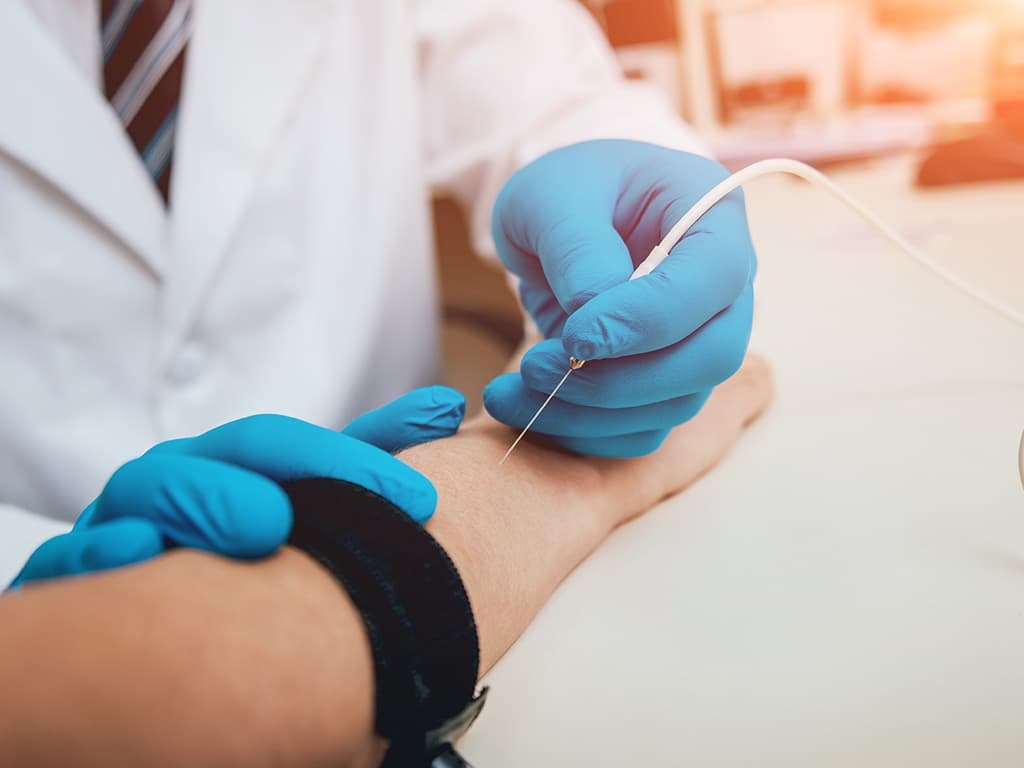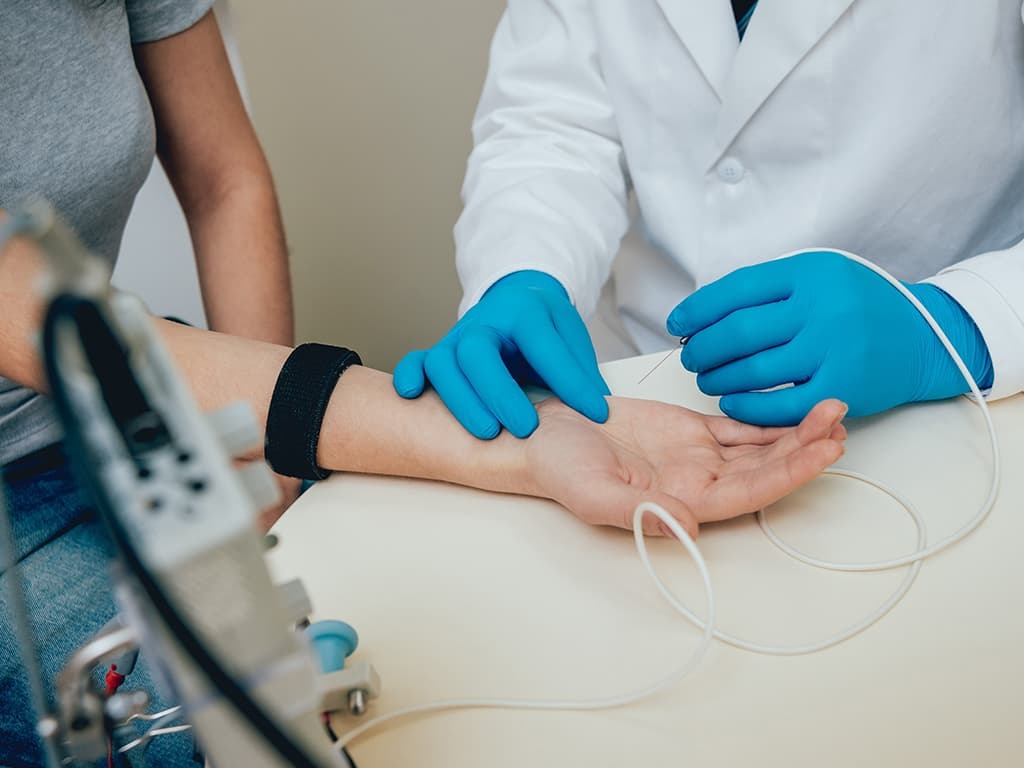- You are here:
- Home »
- Blog »
- Understanding ALS »
- ALS Nerve Tests

ALS Nerve Tests
When someone is suspected of having a disease like amyotrophic lateral sclerosis (ALS), it is usually only confirmed after several different tests have been performed to ensure an accurate diagnosis.
There is no singular, definitive diagnostic tool that can be used and it’s often a case of ruling out other potential conditions before a final conclusion is made.
The reason for this is because many diseases share common symptoms with ALS. For example, a symptom such as not being able to grip a pen or a cup properly could be a sign of carpal tunnel syndrome or something more serious such as multiple sclerosis (MS).
One part of the diagnostic process that is often used for ALS involves nerve tests.
What are Nerve Tests?
ALS directly affects the nerves and if the disease is suspected, the patient may be asked to participate in electrophysiological tests. These tests look at how the muscles and nerves are performing and whether this is comparable to an ALS diagnosis, after other possibilities have been excluded.
They are not sufficient on their own simply because dysfunction of the muscles and nerves can occur because of other health issues such as a spinal cord injury, MS and Parkinson’s Disease.
Types of Nerve Tests
There are two nerve and muscle tests that are commonly used in an ALS diagnosis. They are known as electromyography (EMG) and nerve conduction velocity study (NCS).
1. Electromyography (EMG)

An Electromyography (EMG) is a useful test for ALS and involves measuring the response of a muscle or muscle group when the patient is asked, for example, to bend their leg. Small needles are inserted into the muscle and the information concerning their engagement is registered and shows up on an oscilloscope.
The test is normally carried out over 15 to 30 minutes but depends on the condition that the patient is being tested for.
This device shows the electrical activity in the muscle in the form of waves. The test is carried out with the muscle in specific states, first at rest, slightly contracted and then fully contracted.
Once the electrodes have been attached, the patient may be asked, for example, to lift or bend your arm or leg, depending on which part of the body is being tested. At rest, the muscles should produce no signal at all because no nerve impulse is being transmitted.
When an individual consciously moves their arms or legs, then a signal will be produced. The size of the wave will give an idea of how well the nerve impulses are working. If the patient contracts their muscles more forcibly, then the wave size should increase.
If an individual has ALS, then the test should show a reduced wave which means that communication through the nerves is not as strong as it should be. This on its own, however, is not sufficient for a confirmed diagnosis of the disease.
2. Nerve Conduction Study

Similar to an EMG, a nerve conduction study (NCS) attempts to find out if the transmission between nerves is as fast as it should be. This is also called a nerve conduction test (NCT). What it does is send an impulse from one part of the body to another, directly along the nerve and checks how fast this message travels.
A NCS usually takes about 30 minutes and involves attaching an electrode to one part of the body and another electrode ‘downstream’. An impulse is then sent from the upper electrode down to the lower one and the patient may feel a brief shock or tingle as the test is being carried out.
The purpose here is to measure how quickly the impulse travels from one part of the body to another. If the individual has nerve damage, they will generally see a slower time recorded for that transmission to take place.
Both of these aforementioned nerve tests are carried out either by a specialist physiatrist or a neurologist and require little in the way of preparation. There may be some slight discomfort if needles have to be inserted, but for the most part, both procedures are relatively painless and should only take about 30 minutes to complete.
While these tests are carried out when attempting to diagnose ALS, they can also be used to measure disease progression, for example, to see if the patient is showing increased muscle weakness over time. On their own, these tests do not definitively say whether or not the patient has ALS.
However, if an individual has ALS, then it would be expected for them to show signs of nerve damage.
